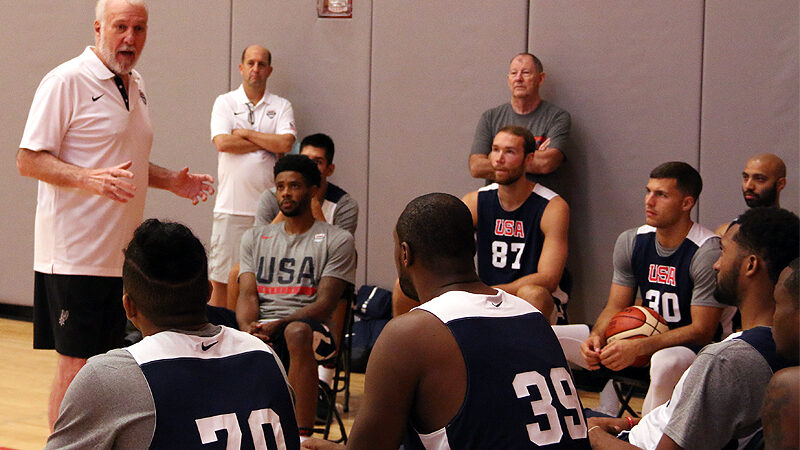TELLING vs TEACHING | Communication
We are launching a new series that we are calling TELLING vs TEACHING. This is motivated by a recent video that was posted by Brian Kight. Check out the video below, to learn about the most under-coached profession.
How is it possible that coaching is the most under-coached profession? The answer is very simple. There are no clearly defined requirements to get into coaching. To take that a step further, we are seeing more coaches TELLING players what to do, as opposed to TEACHING players how to play the game. Below are some of the examples that you might hear in a gym:
“You’ve got to finish that!”
“Talk on defense!”
“Take care of the ball!”
These are all examples of TELLING, when experienced coaches understand that the key is to spend your time TEACHING your players. Here are some “teaching” examples, which align with the same “telling” statements from above.
“Keep your eyes and chin on the rim!”
“Talk it, touch it, switch it on the ball screen!”
“Get to two feet in the paint and throw to what you see!”
While these are general examples, it is most important that coaches recognize the value of TEACHING players how to play the game. TELLING players what to do is counter productive for an experienced coach, because the goal is to create an environment that is conducive to learning and improving.
The topic of the first blog post is to discuss communication. One common misconception is that players do not want to talk. In most cases, the problem is actually that players do not know what to say. Most coaches have been around teams that talk, laugh, make jokes, and are loud off the floor. As soon as players get into a practice, they stop talking. It is not an unwillingness to talk. The problem is that no one has taught players what to say. How much would your team improve if all of your players communicated like PJ Tucker in the video below?
[videopress 463vvO70]
Before we can teach our players how to communicate effectively, we must equip our coaches with a process to break it down with their teams. If we don’t coach the coaches, then we will be back in the habit of telling our players, instead of teaching them. Here is a great way to break down communication into three phases for your team.
PHASE ONE: What are you doing?
In Phase One, players are encouraged to simply talk through what they are doing individually. This might sound like, “I’m in help. I’ve got the ball. Jump to the ball. I’m in a gap.” This is the starting point for players. The key is to correct terminology, but never tell a player that they are wrong. We want to build confidence!
PHASE TWO: What do you see happening?
In Phase Two, players are talking about what they are doing, but also what they see happening. This is where the communication starts to involve their teammates. This might sound like, “I’m in help. Cutter coming through. Ball screen right. Ball screen right. I’m hedging. You’re back. I’m here.” It is being able to communicate what is happening in that particular moment. Once again, as a coach, we want to hold players accountable to communicating with our terminology, but we do not want players to ever feel like they are wrong. Furthermore, this is where you will see breakdowns in communication between teammates. It is essential that you encourage players to work through it. Coaches should take the role of mediator, to keep communication productive, but should not shut down the back and forth between players.
PHASE THREE: What is going to happen next?
In Phase Three, players reach an elite level of communication. This involves being able to recognize and call out actions before they happen. It is unlikely that you will get your entire team to this level, but the best teams have a couple of these types of communicators on the floor at all times. Phase Three communication might sound like, “Ball screen coming. Ball screen coming. Be ready to switch it. I’ve got help on the slip. I’ve got help on the slip.” In this example, it is recognizing an action early, communicating the plan to teammates, and also acknowledging coverage for a potential counter from the offense.
As you look to create better communication with your team, the key is to TEACH players how to talk. If you find yourself saying, “we need to talk,” then you should consider stopping and going one layer deeper to discover why your players are not talking. A mediocre coach tells the players what to do. A great coach teaches the players how to learn what needs to happen. If you take ownership for becoming a better teacher, your teams will improve, and your program will be on the path to sustainable success.
Do you have thoughts on TEACHING vs TELLING? You can share them by connecting with us on social media (@DynamicCoaches). You can also e-mail us at: INFO@dynamiccoachingtools.com


